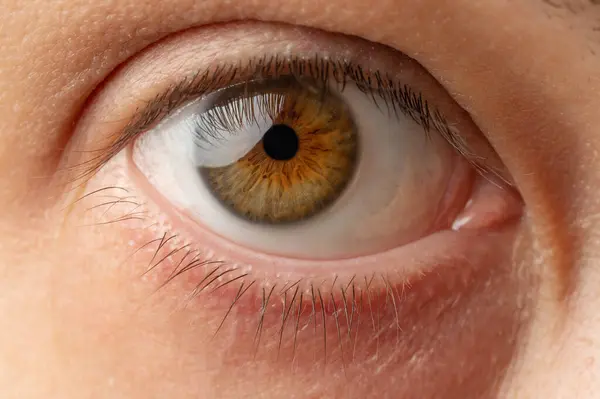Key Takeaways
- Diabetic retinopathy is a common diabetes-related eye condition.
- A healthy lifestyle can significantly reduce the chance of vision problems.
- Advancements in technology are improving outcomes for those affected.
The Connection Between Diabetes and Eye Health
Understanding the complex interaction between diabetes and eye health is critical for the millions of people living with the disease around the globe. High blood sugar levels might cause several issues, with Bronx diabetic retinopathy being among the most concerning. This disorder arises when high glucose levels damage the retina’s tiny blood vessels, leading to visual impairment or possibly blindness if not treated. Proactive diabetes management plays a vital role in protecting ocular health. Blood sugar levels should be examined regularly to keep healthy and avoid damage. Importantly, this vigilance is about preserving sight and enhancing overall quality of life through better health outcomes. Knowing the risks empowers individuals to take control, reducing the incidence of sight-threatening conditions over time.
Symptoms and Signs of Diabetic Retinopathy
Early detection of diabetic retinopathy hinges on recognizing its subtle symptoms. Individuals might notice blurred vision, which can progress to distortions and the appearance of floaters or dark spots in their vision. These symptoms often signal that the blood vessels in the retina are leaking or new, abnormal blood vessels are forming. Increased difficulty in night vision can also indicate the escalating severity of the condition. Timely identification and treatment are paramount. Anyone experiencing these symptoms should seek the counsel of an eye care specialist immediately. Diagnosing diabetic retinopathy in its initial stages can significantly improve treatment options and outcomes, potentially halting or reversing damage and preserving eyesight.
Prevention and Early Detection Strategies
Prevention is the foremost strategy against the progression of diabetic retinopathy. Effective management starts with keeping blood glucose levels within a target range, achieved through diet, exercise, and medication if necessary. This foundation is supported by controlling blood pressure and cholesterol, which is essential to preventing vascular damage.
- Commit to annual eye exams.
- Engage in a balanced diet and routine exercise.
- Adhere to prescribed diabetes management plans.
Consistent and comprehensive eye examinations act as a critical line of defense. These exams allow for detecting minute changes in the eye before noticeable symptoms arise. By catching potential issues early, patients can address them proactively, maintaining better control over their vision health and reducing the likelihood of severe complications.
Advancements in Medical Technology
The medical sector continues to advance, giving diabetic retinopathy patients hope. Innovative treatments such as laser therapy aim to seal leaking retinal blood vessels and prevent further deterioration. Even more promising are eye injections that can more effectively reduce or reverse retinal damage. These technological breakthroughs highlight the importance of staying informed about potential new therapies. Patients who understand and discuss treatment options with healthcare providers can make empowered decisions about their care. This proactive approach ensures that they are treating symptoms and addressing the root causes, promoting better eye health in the long run.
Lifestyle Changes to Support Eye Health
Adopting meaningful lifestyle changes can dramatically influence one’s diabetes management and eye health. Eliminating smoking from one’s lifestyle reduces the risk of diabetic retinopathy progression significantly. Smoking exacerbates vascular damage, aggravating any existing conditions. Collective lifestyle modifications work synergistically, enhancing the overall well-being of individuals with diabetes and fortifying against eye diseases.
The Importance of Regular Eye Examinations
Consistent, regular eye examinations are a cornerstone for preserving visual health in everyone, particularly those with diabetes. These exams are crucial in detecting diabetic retinopathy and other age-related eye diseases like glaucoma and macular degeneration. The comprehensive nature of these examinations provides invaluable insights into one’s overall eye health. Regular interactions with an eye care professional enable the establishment of a trusted healthcare partnership. Such partnerships facilitate early detection and maximize the effectiveness of treatment plans, significantly contributing to preventing vision loss. By committing to these routine examinations, individuals take a proactive step in safeguarding their eyesight and broader health outlook.
Real-Life Success Stories
Success stories abound among those who have managed their diabetic retinopathy through disciplined lifestyle choices and advanced medical treatments. These narratives reveal the potent combination of personal commitment and innovative medical intervention. For many, actively engaging in their health management leads to substantial improvements in vision and quality of life. Sharing these stories is not only inspiring but also encouraging for those newly diagnosed. They illustrate the power of determination and point toward the significant role of informed choices in disease management. Living with diabetes need not equate to resigned acceptance of complications, as these stories prove that maintained awareness and action can lead to successful disease management.


